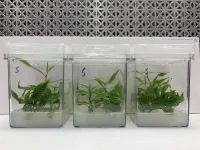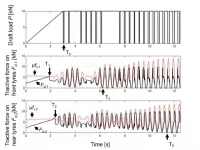(Press-News.org) LONDON, ON - New findings from Ontario have shown that children born in Sarnia have a higher risk of developing asthma compared to neighbouring cities. A research team from Lawson Health Research Institute and Western University, using provincial data from ICES, found that higher air pollution exposure in the first year of life very likely contributed to this higher risk. Their results are published today in CMAJ Open.
Summary of study results:
-Children born in Sarnia in the 1990s and early 2000s were disproportionally at a higher risk of developing asthma in the first few years of life, compared to neighbouring cities.
-Air pollution exposure in the first year was found to be associated with the development of asthma in children.
-Overall rates of new childhood asthma diagnosis in Southwestern Ontario have been decreasing over time in parallel to decreases in air pollution levels.
"It's known that cities in Southwestern Ontario have varied levels of air pollution because of differences in industry and traffic. For example, Sarnia is home to the 'Chemical Valley' where numerous chemical plants and oil refineries are clustered," says Dr. Dhenuka Radhakrishnan, an Adjunct ICES Scientist, formerly working out of ICES Western in London, and Pediatric Respirologist at CHEO. "We wanted to see if children born in three cities - London, Windsor and Sarnia - had a different risk of developing asthma due to the differing air pollution levels in the three regions, even though the people living in these cities are otherwise comparable in many ways."
The researchers followed 114,427 children born in these cities between 1993 and 2009 for 10 years, and found that those in Sarnia were at the highest risk of developing asthma. The researchers found that by the age of 10, nearly 24 per cent of children in Sarnia were diagnosed with asthma, compared to 21 per cent in Windsor and 17 per cent in London. The differences were also present after accounting for many risk factors associated with asthma, such as sex, socioeconomic status and urban versus rural setting. The findings were most apparent in the first two years of life, but persistent beyond the age of six.
"Reassuringly, we found the asthma risk for children has reduced in more recent years as pollution levels have also decreased," adds Dr. Radhakrishnan.
Asthma is the most common chronic disease in Canadian children and has significant impact on quality of life. Asthma is the leading cause of emergency department visits and hospital admissions in this age group.
"It's important to find strategies to prevent asthma development and this study suggests that reducing air pollution exposure, including environmental causes, might reduce the number of children who suffer from asthma," explains Dr. Salimah Shariff, Associate Scientist at Lawson, Adjunct Professor at Western and Scientist at ICES Western.
There is also growing evidence that exposure during pregnancy can influence development of asthma in children. "We need to carefully examine how reducing air pollution exposures within a geographic area translates to reductions in asthma development. Understanding the amount of air pollution that a mother and infant are exposed to, and how this impacts their personal risk, could enable regions to target safer levels for their residents," adds Dr. Shariff.
Wednesday, May 5 is World Asthma Day (WAD). Recognizing symptoms of asthma early is the best a parent can do to improve the health of their child, so they can be diagnosed quickly and start appropriate treatments. If a parent notices their child has wheezing, persistent cough or difficulty with exercise, they are encouraged to bring this to the attention of a health care provider.
INFORMATION:
SHORT EXPLAINER VIDEO: https://youtu.be/lfp7522tEQI
DOWNLOADABLE IMAGES: https://www.lawsonresearch.ca/children-born-sarnia-higher-risk-developing-asthma-compared-london-and-windsor
FOR MORE INFORMATION, PLEASE CONTACT:
Laura Goncalves
Communications & External Relations
Lawson Health Research Institute
T: 519-685-8500 ext. 64059
C: 226-448-1525
laura.goncalves@lawsonresearch.com
ABOUT LAWSON HEALTH RESEARCH INSTITUTE - @LawsonResearch
Lawson Health Research Institute is one of Canada's top hospital-based research institutes, tackling the most pressing challenges in health care. As the research institute of London Health Sciences Centre and St. Joseph's Health Care London, our innovation happens where care is delivered. Lawson research teams are at the leading-edge of science with the goal of improving health and the delivery of care for patients. Working in partnership with Western University, our researchers are encouraged to pursue their curiosity, collaborate often and share their discoveries widely. Research conducted through Lawson makes a difference in the lives of patients, families and communities around the world.
ABOUT WESTERN - @WesternU
Western delivers an academic experience second to none. Since 1878, The Western Experience has combined academic excellence with life-long opportunities for intellectual, social and cultural growth in order to better serve our communities. Our research excellence expands knowledge and drives discovery with real-world application. Western attracts individuals with a broad worldview, seeking to study, influence and lead in the international community.
ABOUT ICES - @ICESOntario
ICES is an independent, non-profit research institute that uses population-based health information to produce knowledge on a broad range of health care issues. Our unbiased evidence provides measures of health system performance, a clearer understanding of the shifting health care needs of Ontarians, and a stimulus for discussion of practical solutions to optimize scarce resources. ICES knowledge is highly regarded in Canada and abroad, and is widely used by government, hospitals, planners, and practitioners to make decisions about care delivery and to develop policy. In October 2018, the institute formerly known as the Institute for Clinical Evaluative Sciences formally adopted the initialism ICES as its official name.
Agência FAPESP – White-sand savannas are expanding in the heart of the Amazon as a result of recurring forest fires, according to a study published in the journal Ecosystems.
The study was supported by FAPESP, and conducted by Bernardo Monteiro Flores, currently a postdoctoral fellow in ecology at the Federal University of Santa Catarina (UFSC) in Brazil, and Milena Holmgren, a professor in the Department of Environmental Sciences at Wageningen University in the Netherlands.
“The edges of the Amazon Rainforest have long been considered the ...
FINDINGS
A new study by researchers at the UCLA Jonsson Comprehensive Cancer Center has identified a novel combination therapy to potentially help overcome resistance to immunotherapy in people diagnosed with advanced lung cancer. The combination approach uses immune checkpoint inhibitors with ATRA, a safe medication that is widely used to treat leukemia. The team found the combination therapy led to eradication of over 70% of tumors when tested in mice with LKB1-deficient lung cancer. It also generated durable tumor-specific immunity.
BACKGROUND
Immune checkpoint inhibitors have substantially ...
As nurseries and garden centers fill up with spring landscaping plants, home gardeners owe a lot to a technique called micropropagation, which has proven beneficial to many plants - perhaps soon to include cannabis, thanks to work by UConn researchers in the College of Agriculture, Health, and Natural Resources.
Micropropagation is a technique used for growing large quantities of new plants from fewer "parent" plants, yielding clones with the same, predictable qualities. The cannabis (Cannabis sativa) industry, however, has been largely left out of this beneficial technique, because this species of plant is extremely difficult to micropropagate.
Researchers from UConn - including Associate Professor Jessica Lubell-Brand, Ph.D. student Lauren Kurtz, and Professor Mark ...
May 4, 2021 - From the very beginning of the AIDS epidemic in 1981, nurses have been at the forefront of patient care, advocacy, and research. But even in the age of antiretroviral therapy and pre-exposure prophylaxis, many challenges remain in reducing the impact of HIV and AIDS, according to the special May/June issue of END ...
Relatives of the giant crocodile might have been kings of the waterways during the Cretaceous period, eating anything--including dinosaurs--that got a little too close to the water's edge, but the largest of these apex predators still started off small. Figuring out how these little crocs grew up in a world surrounded by giants is no small task. Now crocs fossils from Texas are shedding light on how these animals changed their diets as they grew, helping them find a place of their own in environments alongside their bigger, badder relatives.
According to the study, published by Cambridge University Press, the crocodiless in question are members of the Deltasuchus motherali and lived along the coastline of Texas 96 million years ...
Scientists have shed light on why some people who have a stroke do not also have abnormal heart rhythms, even though their hearts contain similar scar tissue.
Their results, published today in eLife, could help identify the best treatments for people who might be at risk of recurrent stroke, new heart disorders, or both.
Strokes are often caused by abnormal blood flow resulting from rapid, irregular beating in the upper chamber of the heart. This is also called atrial fibrillation (AFib). But some people have strokes that appear to have been caused by the heart, ...
Aachen, Germany and Hennigsdorf/Berlin, Germany, May 4, 2021 - German University Hospital Uniklinik RWTH Aachen ("Uniklinik RWTH Aachen") and diagnostics company SphingoTec GmbH ("SphingoTec") today announced that the endothelial function biomarker bio-ADM aids in the early risk stratification and management of patients suffering from severe COVID-19, in need for escalated intensive care treatment (1). A team lead by the clinical researchers at Uniklinik RWTH Aachen has shown that high bio-ADM levels indicate the severity of the acute respiratory distress ...
Tokyo, Japan - Researchers at Tokyo University of Agriculture and Technology (TUAT) modeled the dynamic instability--the so-called "power hop"--that can cause uncontrollable bouncing and damage tractors when they plow dry ground. The team found that self-excited oscillations can arise when the tractor pushes against the ground.
Plowing a field on a tractor may seem like a serene occupation, but sudden vibrations can grow unexpectedly and threaten to topple you under certain conditions. The problem is that in nonlinear systems with coupled components, as with a mechanical tractor, ...
A synthetic approach that improves absorber layers in perovskite solar cells could help them achieve their full potential and draw closer to the performance of leading gallium arsenide devices.
Solar cells that rely on perovskite thin films to capture sunlight are the fastest growing photovoltaic technology. Cheaper and easier to manufacture and incorporate into devices than conventional semiconductors, lead halide perovskites also effectively absorb visible light and display long charge carrier diffusion lengths -- an indicator of their ability to maintain light-induced electrons and holes separation and facilitate charge transport.
Performance ...
A new Boston University School of Public Health (BUSPH) study has identified for the first time how the aryl hydrocarbon receptor (AhR), an environmental chemical receptor, drives immunosuppression in oral squamous cell carcinoma (OSCC)--and that its removal from malignant cells can result in tumor rejection.
Published in the journal Proceedings of the National Academy of Sciences, the study findings provide new insight into the biology of cancer immunosuppression, and identify a new target for cancer immunotherapy treatment.
Immune checkpoint inhibitors (immunotherapy drugs) are some of the most important treatments that have emerged for treating many cancers, including OSCC. Targeting immune checkpoint molecules such as PD-1, ...


